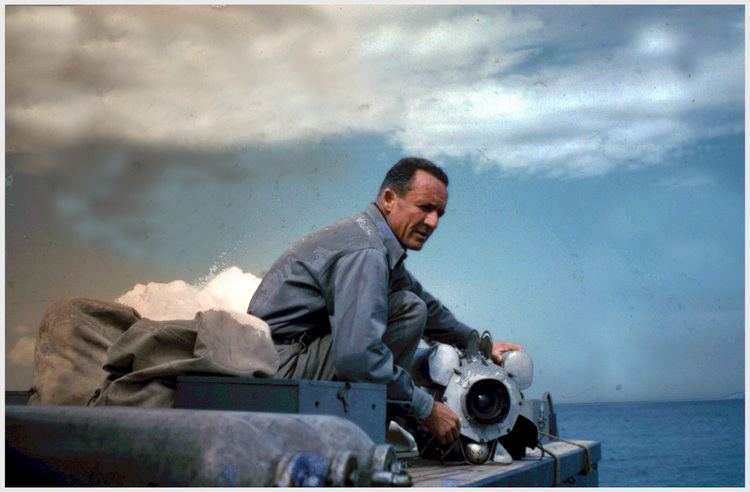Name Frederic Dumas | ||
 | ||
The fr d ric dumas historical diving museum sanary mer france
Frédéric Dumas (14 January 1913 – 26 July 1991) was part of a team of three, with Jacques-Yves Cousteau and Philippe Tailliez, in which he was nicknamed Didi. They had a passion for diving, and developed the diving regulator with the aid of the engineer Émile Gagnan. Frédéric Dumas then participated with Jacques-Yves Cousteau in the discovery of the underwater world and in bringing it to the attention of the general public.
Contents
- The fr d ric dumas historical diving museum sanary mer france
- That s me today at sanary 2012 vintage dive with mus e fr d ric dumas
- His life
- Quotations
- Museum
- References

That s me today at sanary 2012 vintage dive with mus e fr d ric dumas
His life
Frédéric Dumas was born on 14 January 1913 in Albi.

A pioneer of underwater fishing on the French Riviera, he met Jacques-Yves Cousteau and Philippe Tailliez in 1937 and his exploits served as a subject in the first Cousteau film "Par dix-huit mètres de fond" ("Eighteen meters deep"), made in 1942.

Cousteau again chose him as an "actor" when he made his second film, "Epaves" ("Wrecks") in 1943, the first film featuring the new Cousteau-Gagnan aqua-lung.

Dumas was a dive leader aboard the RV Calypso, and co-author or actor in many films and stories from the Cousteau team.
In 1953 he co-authored with Cousteau the book The Silent World: A Story of Undersea Discovery and Adventure. It was their first book. In 1956 he was one of the principal architects of the ground-breaking film The Silent World, in which his ballet with the grouper Ulisses (some claim it is Jojo) is famous.
From 1945 to 1965, Dumas was also a civilian collaborator in the French Navy's Groupement de Recherches Sous-marines (GRS or Underwater Research Group), which was set up by Cousteau and Taillez. It later became the Groupe d'Études et de Recherches Sous-Marines (GERS or Undersea Study and Research Group) and is nowadays known as CEllule Plongée Humaine et Intervention Sous la MER (CEPHISMER or Human Diving and Underwater Intervention Cell).
In 1946, Cousteau and Dumas dove into the Fountain of Vaucluse, a mysterious spring in the village of Vaucluse, hoping to discover the secret of its yearly flooding. Maurice Fargues was the operation's surface commander, in charge of the guide rope which allowed Cousteau and Dumas to communicate with the surface. When Cousteau and Dumas became affected by carbon monoxide in their air cylinders, Fargues saved their lives by pulling them back up to the surface.
Dumas was one of the major players in the rescue of Professor Jacques Piccard's bathyscaphe, the FNRS II, during the 1949 expedition in Dakar. Thanks to this rescue, the French Navy could use the bathyscaphe's sphere in creating the FNRS III.
He was a founding member of the Sea Research Society and served on the Society's Board of Advisors. In 1972 Dumas participated in the creation of the research/professional degree of Doctor of Marine Histories.
After he retired from the GERS, he devoted himself particularly to undersea archaeology and was chairman of the archaeology committee of the Confédération Mondiale des Activités Subaquatiques (CMAS or World Underwater Activities Federation) and the Fédération Française d'Études et de Sports Sous-Marins (FFESSM, French Undersea Studies and Sports Federation).
Frédéric Dumas died on 26 July 1991 in Toulon at the age of 78.
Quotations
Museum
Opened in 1994, the Frédéric Dumas International Diving Museum is in a 13th-century Romanesque tower made available by the municipality of Sanary-sur-Mer where Cousteau had a Villa and that bills itself as an historical city of diving.
